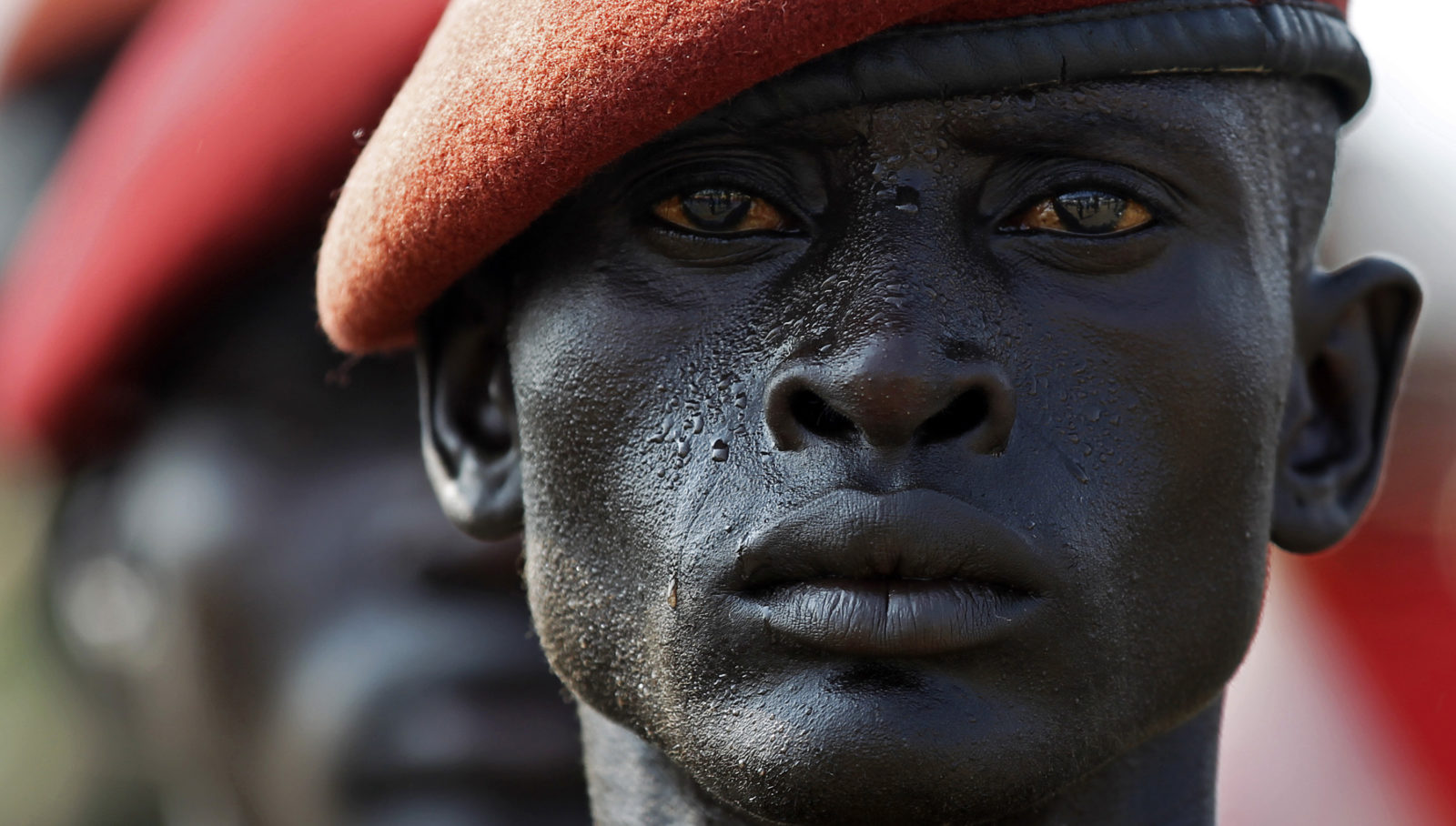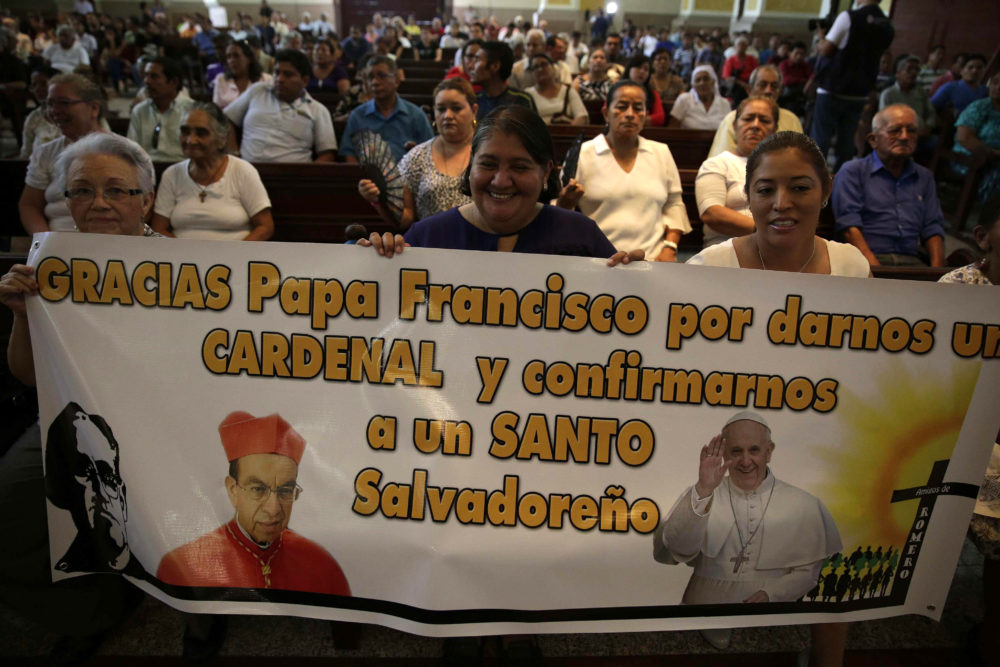News
African Security: Band-Aids and Shotgun Wounds
Until now African security engagement has been a scrappy process, driven by personal ties or opportunism, less strategy and long-termism.

Donald Trump’s words at July’s Brussels Nato summit should have caused a severe case of introspection in the nearly 70-year-old organisation.
No doubt it did; but not entirely on the right stuff.
The US president waded in with a tough and unpopular message about burden sharing. This is nothing new from Washington, of course, even though the messenger and style of delivery was different and for some difficult to stomach. American presidents have frequently banged on about the need for Europeans to spend more, to end the perceived free loading on the overwhelming US defence budget contribution, which comprises two-thirds of all spending among the organisation’s 29 members.
Sensitivity to shake-ups within the global security architecture is heightened at a moment of resurgence in military threat to the West.
Cue Russia, experts in ‘hybrid’ warfare, mixing conventional and unconventional weaponry and tactics battle tested in Ukraine and Syria. With an emphasis on rapid pre-emption without long mobilisation, expeditionary movement and electronic warfare, the military aspect is but one of the instruments of national power Russia now seeks to employ. Its focus is also on closely integrated politico-military ‘system’ warfare, which seeks to de-legitimise and undermine the West’s political and social cohesion on which its military strength and steadfastness is founded, including the rules-based, post-1945 global security architecture. In this environment, the weapons of war are more benign but no less dangerous: including energy politics (such as the Nord Stream 2 pipeline), bribery and blackmail, corrupt business practices, cyber-attacks, assassination, fake news, and election tampering.
China, too, is developing its military capabilities, including stealth and anti-stealth technology, and its cyber and information warfare abilities.
The result of all of this is, as the UK Chief of Defence Staff General Sir Nick Carter has concluded, is ‘a global playing field characterised by constant competition and confrontation, with increasingly assertive and aggressive states, utilising techniques below the threshold of what we would have called conventional war, all of which is overlaid by the threat of terrorism from violent extremist organisations.’
While there is no reason to dispute the extent of the threat to Nato’s military primacy, and its social order, this refocus on big states and big threats highlights an age old tension in Western defence and its organisation.
Currently Nato, as was the case in the Cold War, prepares overwhelmingly for one task – a war, indirect or direct with a big foe, such as Russia or China – which probably won’t happen, while it continuously carries out a range of other supposedly secondary tasks. These ‘other tasks’ are largely small wars and insurgencies, peace support missions, fighting terrorism, and humanitarian relief. These roles soak up huge resources, while demanding a different force capability; less of the high tech electronically-driven capacity than more traditional soldiering, stressing logistics, light infantry, and special forces, altogether less digital (though that is increasingly important as Africa’s connectivity improves) than traditional. These are seen as wars ‘from the ground up’; but as will be argued, they demand equally a ‘top-down’ strategy and engagement.
Just as with the high end of modern warfare, effectiveness at these so-called secondary tasks too demands taking a fresh approach. The game is changing, and the West has so far largely failed to change with it.
Africa, just 14 kilometres from Europe across the Gibraltar strait, is in the throes of a societal revolution which, absent a shift from the business-as-usual practices of its polity, can only further stress its politics and stability.
Over a generation Africa’s population is projected to double to 2.5-billion. Most of this increase will take place in its cities, which will accommodate over half of African citizens by 2030. Sixty years ago this figure was just 10%.
Already the inability of African governments and their economies to provide for this population, whose average age is under 20, less than half that of Western Europe, has seen a dramatic increase in migrants from the continent. Since 2010 the Pew Research Centre estimates that more than one-million sub-Saharan Africans have moved to Europe, and another 400,000 to the US.
The push factors are considerable. In surveying six of the ten countries that have supplied many of the African immigrants to the US including Nigeria, Senegal, Ghana and Kenya, which are also among the top ten origin countries for sub-Saharan migrants to Europe, Pew found that at least four-in-ten answered ‘yes’ to the question whether they would go to live in another country including roughly three-quarters of those surveyed in Ghana and Nigeria. These findings are consistent with other research. The search for better economic prospects and improved political stability helps to explain why so many sub-Saharan Africans say they plan to move to another country in the next five years, including 44% of those polled in Senegal, 42% in Ghana (42%), and 38% in Nigeria. A remarkable 1.7-million Ghanaians (6% of Ghana’s population) applied for the US diversity lottery in 2015, though only 50,000 people worldwide gain admission to the US each year through this programme.
This is hardly surprising given already high unemployment levels in Africa. The continent’s youth account for 60% of all of Africa’s jobless, according to the World Bank, a rate more than twice that for adults. Today those under 24 comprise nearly two-thirds of Africa’s population. The presence of more people in the job market can in the current policy environment only suppress wages and further diminish work opportunities; if handled with a fresh approach this could lead, as in China, to a demographic divided.
The current Western focus is to try and improve the conditions in African countries by more focused aid expenditure on private sector growth, essentially the thinking behind the recent German-led G20 “Compact with Africa”.
On the security front, the Western approach largely combines anti-terrorism operations with bottom-up training. The notion behind this is little different to that of the military’s civilian counterparts: If you can teach the person to fish, you can get him to do your bidding. And this offers a multiplier in both capability and influence than simply carrying out the tasks for the locals, even if that was possible. This explains the widespread presence of US troops in Africa, or that the UK had more than 100 training missions across the continent last year.
This approach is however insufficient for the task.
Africans will gladly take whatever training is on offer, and especially goods and money, while not necessarily aligning their intent and policies with external interests or, in fact, developing robust domestic capacity. The rapid collapse of Mali’s army in 2012 despite two decades of external military assistance is a case in point. Somalia, which remains a keystone to the aid strategy of a number of Western countries including the UK, is an extreme example of this tendency. Despite large volumes of external assistance, so far there is little evidence of the country being able to work out of its clan- or sub-clan-based units, save opportunistic alliances. In this, outsiders are essentially seen as resources. This is why some groups of Somalis are prepared to do things to keep the donors in there, including denying food aid and carrying out atrocities. While Somalis have a ruthless sense of solidarity in some ways to their group, they too possess an equally ruthless sense of self-preservation to the exclusion of nationalism.
Any sense of common interest is difficult in this situation, which means that outsiders who arrive with an idea of building something, of training people to act in certain ways run counter to the Somalia instinct which views them from within their narrow clan not national prism, fuelled, too, by the realisation that the outsiders are just temporary.
A new approach to military assistance to Africa would demand adjusting to four key principles to be effective:
First, fundamentally, these engagements require a political approach. There is a need to understand the way in which Africa sees the world. This will take time and dedicated expertise. This is thus largely not bottom up (the current approach) and tactical, but a top-down and strategic undertaking.
Second, outsiders have to convince the Africans to work with them. Again, this is strategic, not tactical, and top-down. But this largely has to abandon the notion that you can change a leadership’s political and policy direction by building a solution to problems. Fundamentally it has to accept that locals are the way they are, and find the means to work with them within these confines.
Third, where it can be achieved, success demands a long-term, generational approach.
Until now African security engagement has been a scrappy process, driven by personal ties or opportunism, less strategy and long-termism. Famously Tony Blair’s interest in Sierra Leone, the apogee of his Africa security engagement during his time as prime minister, was supposedly pricked by his father’s tenure as a law professor in Freetown’s university. Similarly the existence of various British military advisory or peace support teams have been motivated in part by colonial connections and a need to be seen to help.
Fourth, this requires a highly differentiated and realistic approach. In some cases, even if there is an external political or personality-driven imperative “to be places”, the goals have to be limited. Africa is not one thing. It defies stereotypes.

It does mean not helping some states, no matter the immediate urge, or personal interests, or the need to kick aid out of the door in so doing. Commitment of some Western countries to the 0.7% aid-to-GDP benchmark risks the logic of supply trumping demand in spending.
Too much foreign aid is on “auto-pilot” with funds spent regardless of what the leadership of the country is doing/not doing. Calling that out would be useful, as would the need for donor countries to get much, much more proactive in calling out bad governance, corruption and incompetency.
Take the Congo, a renewed focus of international concern given Joseph Kabila’s unwillingness to hold the election scheduled for two years ago.
The international community spends around $1-billion each year retaining the United Nations mission there which has been under way since 1999. To this bill should be added the approximately $1-billion for each of the country’s two democratic elections in 2006 and 2011, altogether comprising some $50-billion in official assistance over the last 20 years.
In spite of this considerable investment, the country’s peace is non-existent, an incessantly violent conflict between rival militia, ethnic armies and government factions. Probably over five-million people have died (no one really can say with any certainty given the conditions), with endemic violence that The Economist has described as “children murdering in gangs, civilians massacred by the thousand, rape as common as petty thievery”. Despite possessing an estimated $20 trillion in mineral wealth, the country ranks at 176th out of 188 countries on the UN’s Human Development Index. And, unsurprisingly, the government and some of its mining partners have been at the centre of multiple corruption allegations.
Congo has never possessed leaders committed to creating, maintaining and prioritising the governance of the country. In part this is because the international community gave President Kabila an effective free pass in the 2006 and 2011 elections, setting the stage for a wider, later crisis. Moreover, it failed to effectively engage in the lead-up to the end of Kabila’s constitutional mandate in 2016 to ensure an effective democratic transition.
It is thus no surprise that, contrary to the West’s earlier bet that he would bring stability, the longer Kabila has stayed on, the more likely is instability and violent conflict.
Instead of girding their loins of finding ways to give more money, some honesty about aid failures would be refreshing.
The core issue is not aid, however, but the leadership of the country and its focus on maintaining power and wealth. Congo will only start to work better once it has leaders who prioritise the development of the country and its people. Donors have not prioritised that goal however.
In sum: Security assistance to Africa can but only fail if it’s too diffuse, does not take into account widening differences between African states, and does not seek to create a sense of common strategic purpose between the donor and the recipient.
This then begs the question: how to create a sense of common strategic purpose? This can only derive from a shared understanding about the security threats facing Africa and its capacity to respond. Fundamentally, there are those states who might share this view, and those states for which aid is only a temporary patch. But don’t confuse them. This requires building long-term networks through personal associations and credibility to differentiate security providers from the opportunists, just as it seeks to distinguish African partners between like-minded leaders and states from those which only say they are.
Without such an approach, and absent such honesty, security assistance can only be a band aid on a shotgun wound. While keeping some ‘in business’, as history has shown this does little to solve the problems for both Africa and the donors alike.
This article first appeared on The Daily Maverick.


